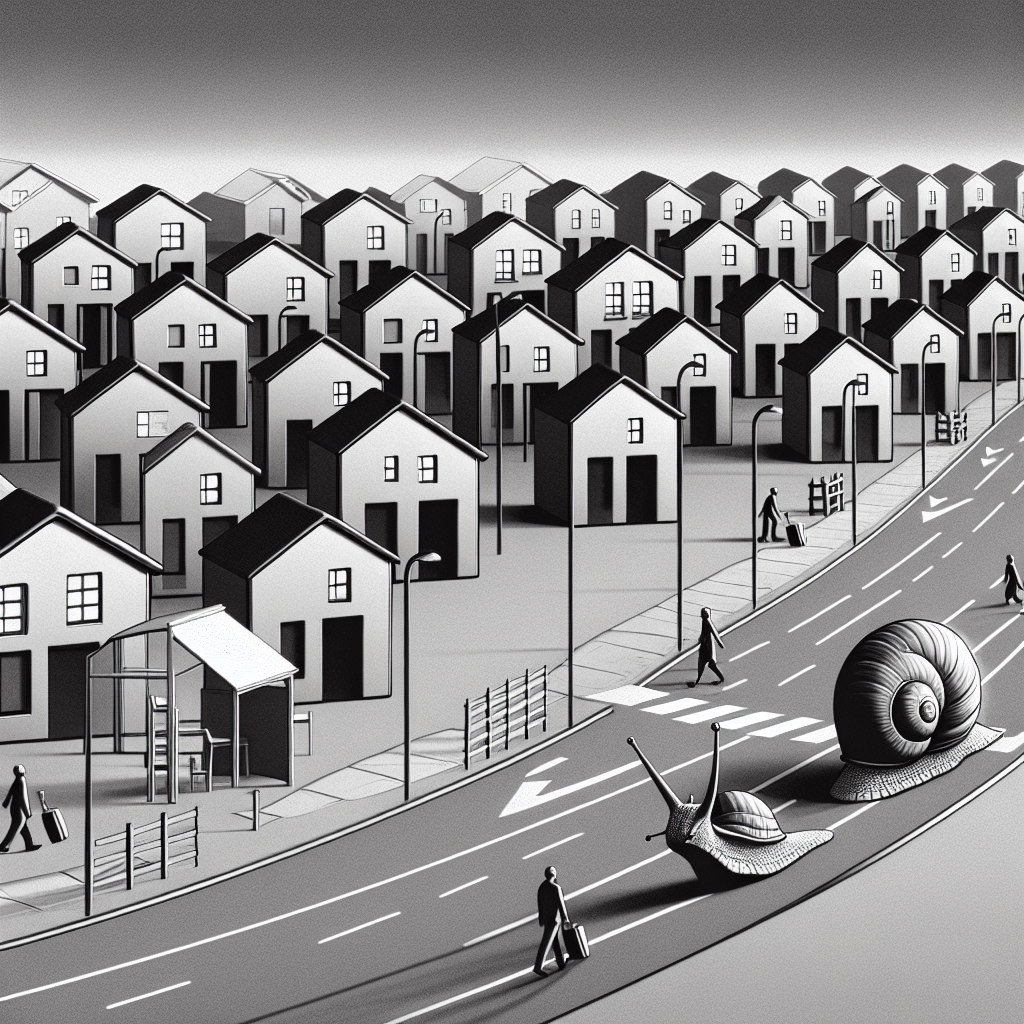-
Table of Contents
- Why the Housing Market Competition is Slowing Down
- Economic Factors
- Rising Interest Rates
- Inflation and Cost of Living
- Supply Chain Disruptions
- Material Shortages
- Labor Shortages
- Demographic Shifts
- Aging Population
- Millennial Homebuying Trends
- Government Policies
- Regulatory Constraints
- Tax Policies
- Case Studies
- San Francisco Bay Area
- Austin, Texas
- Conclusion
Why the Housing Market Competition is Slowing Down

The housing market has long been a cornerstone of economic activity, influencing everything from consumer spending to financial stability. However, recent trends indicate a noticeable slowdown in housing market competition. This article delves into the multifaceted reasons behind this phenomenon, providing a comprehensive analysis supported by examples, case studies, and statistics.
Economic Factors
Rising Interest Rates
One of the most significant factors contributing to the slowdown in housing market competition is the rise in interest rates. Central banks, including the Federal Reserve in the United States, have been increasing interest rates to combat inflation. Higher interest rates make borrowing more expensive, which in turn affects mortgage rates.
- According to Freddie Mac, the average 30-year fixed mortgage rate increased from 3.11% in December 2021 to 5.22% in August 2022.
- This increase in mortgage rates has led to higher monthly payments for new homebuyers, reducing their purchasing power.
As a result, fewer people are able to afford homes, leading to a decrease in demand and, consequently, less competition in the housing market.
Inflation and Cost of Living
Inflation has been another critical factor affecting the housing market. The rising cost of goods and services has put a strain on household budgets, leaving less disposable income for potential homebuyers.
- The Consumer Price Index (CPI) rose by 7.9% in February 2022, the highest increase in over 40 years, according to the U.S. Bureau of Labor Statistics.
- Higher costs for essentials like food, gas, and healthcare mean that people have less money to allocate towards buying a home.
This financial pressure has led to a decrease in the number of people actively looking to purchase homes, thereby reducing competition.
Supply Chain Disruptions
Material Shortages
The COVID-19 pandemic has had a lasting impact on global supply chains, leading to material shortages that have affected the construction industry. The scarcity of essential building materials like lumber, steel, and concrete has slowed down new home construction.
- The National Association of Home Builders (NAHB) reported that the cost of lumber increased by over 300% between April 2020 and May 2021.
- These increased costs have been passed on to homebuyers, making new homes less affordable.
With fewer new homes being built, the supply of available homes has not kept pace with demand, contributing to a slowdown in market activity.
Labor Shortages
In addition to material shortages, the construction industry has also been grappling with labor shortages. The pandemic led to a significant number of workers leaving the workforce, either due to health concerns or early retirement.
- The U.S. Chamber of Commerce reported that 88% of contractors are having difficulty finding skilled labor.
- This shortage has further delayed construction projects, exacerbating the supply-demand imbalance in the housing market.
The combination of material and labor shortages has made it challenging to increase the housing supply, contributing to the slowdown in market competition.
Demographic Shifts
Aging Population
Demographic changes are also playing a role in the slowing housing market. The aging population is a significant factor, as older homeowners are less likely to move compared to younger individuals.
- The U.S. Census Bureau projects that by 2030, one in five Americans will be 65 years or older.
- Older homeowners are more likely to stay in their current homes, reducing the number of homes available for sale.
This trend has led to a decrease in housing turnover, contributing to the slowdown in market competition.
Millennial Homebuying Trends
Millennials, who are now the largest generation in the workforce, have different homebuying preferences compared to previous generations. Many millennials are delaying homeownership due to factors such as student loan debt and a preference for urban living.
- A study by the Urban Institute found that millennials have a homeownership rate of 37%, compared to 45% for Gen Xers at the same age.
- This delay in homeownership has contributed to a decrease in demand, further slowing down market competition.
As millennials continue to delay purchasing homes, the overall demand in the housing market remains subdued.
Government Policies
Regulatory Constraints
Government policies and regulations can also impact the housing market. Zoning laws, building codes, and other regulatory constraints can limit the supply of new homes.
- A report by the National Bureau of Economic Research (NBER) found that restrictive zoning laws can increase housing prices by up to 50% in some areas.
- These regulations can make it more difficult and expensive to build new homes, limiting the supply and reducing market competition.
While these regulations are often intended to ensure safety and maintain community standards, they can also contribute to the slowdown in housing market activity.
Tax Policies
Tax policies can also influence the housing market. For example, changes to property tax rates or mortgage interest deductions can affect home affordability and buyer behavior.
- The Tax Cuts and Jobs Act of 2017 capped the mortgage interest deduction at $750,000, down from $1 million previously.
- This change has made it less attractive for some high-income individuals to purchase expensive homes, reducing demand in certain segments of the market.
These policy changes can have a ripple effect on the housing market, contributing to the overall slowdown in competition.
Case Studies
San Francisco Bay Area
The San Francisco Bay Area provides a compelling case study of how various factors can converge to slow down housing market competition. Known for its high housing prices and strong demand, the Bay Area has recently seen a slowdown in market activity.
- According to Zillow, the median home price in San Francisco decreased by 2.5% from June 2021 to June 2022.
- Rising interest rates and high living costs have made it more difficult for potential buyers to afford homes in the area.
- Additionally, strict zoning laws and regulatory constraints have limited the supply of new homes.
These factors have collectively contributed to a slowdown in housing market competition in the Bay Area.
Austin, Texas
Austin, Texas, another hot housing market, has also experienced a slowdown. Known for its booming tech industry and rapid population growth, Austin has seen a significant increase in housing prices over the past decade.
- The Austin Board of Realtors reported that the median home price in Austin increased by 40% from 2020 to 2021.
- However, rising interest rates and inflation have started to cool down the market, with the median home price increasing by only 5% from 2021 to 2022.
- Supply chain disruptions and labor shortages have also slowed down new home construction in the area.
These factors have led to a decrease in housing market competition in Austin.
Conclusion
The slowdown in housing market competition is a complex issue influenced by a variety of factors. Economic conditions, including rising interest rates and inflation, have reduced the purchasing power of potential homebuyers. Supply chain disruptions and labor shortages have limited the supply of new homes, while demographic shifts and government policies have further contributed to the slowdown.
Case studies from regions like the San Francisco Bay Area and Austin, Texas, illustrate how these factors can converge to impact local housing markets. As these trends continue, it is essential for policymakers, industry stakeholders, and potential homebuyers to understand the underlying causes and adapt accordingly.
In summary, the slowdown in housing market competition is not due to a single factor but rather a combination of economic, supply chain, demographic, and policy-related influences. Understanding these factors can provide valuable insights for navigating the current housing market landscape.








